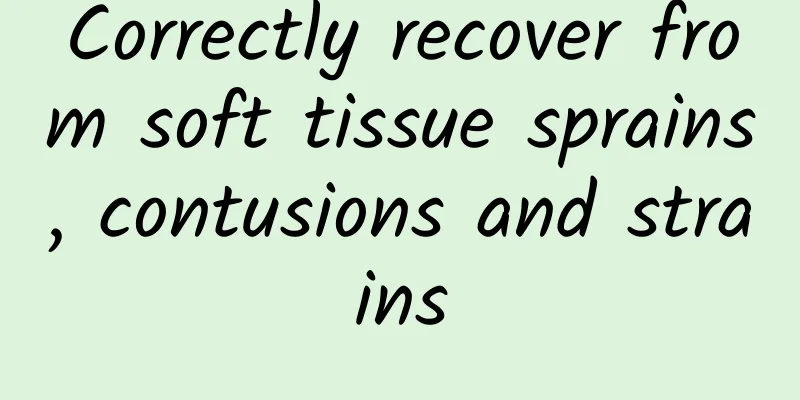How long does it take to recover from anterior cervical spine surgery?

|
Anterior cervical spine surgery is a relatively common surgery for treating cervical spondylosis. Patients need a period of recovery after the surgery. As for the length of recovery time, it depends on the effect of the surgery, the patient's specific condition, and physical constitution. Generally, patients will be able to get out of bed and exercise moderately a few days after the surgery. After the surgery, you must understand some precautions and pay more attention to rationality. Precautions after anterior cervical spine surgery The indications for anterior cervical spine surgery are generally compression of the cervical spinal cord or nerve roots below three segments, and the patient has radicular symptoms that do not improve after more than three months of conservative treatment; or myeloid symptoms occur, and the patient has difficulty walking with both hands or lower limbs. The surgical method currently used: ACDF or ACCF. ACDF refers to the removal of the intervertebral disc and fusion of the adjacent surgical segments; ACCF refers to the removal of the vertebra and fusion of the adjacent surgical segments. Both require anterior plate protection. Postoperative treatment: 1) After returning to the ward from the operating room, the patient is generally fixed with a neck brace, placed in a supine position, and placed under ECG monitoring. The next 24 hours are the critical time after the operation, and the patient's vital signs must be closely observed. The drainage tube and breathing conditions are particularly important. If breathing difficulties occur and drainage fluid is insufficient, postoperative hematoma formation may be the cause. In an emergency, an incision exploration must be performed at the bedside, otherwise death from suffocation may occur. 2) On the second day after surgery, the patient's vital signs are stable. The drainage fluid from the drainage tube is generally greater than 40 ml. It is recommended to leave it in place for another day for observation. You can raise the head of the bed about 40° and remember to wear a neck brace. 3) On the third day after surgery, the patient's drainage volume was less than 40 ml, and the drainage tube was removed. X-rays and cervical spine MRI were reviewed after surgery, and the patient wore a neck brace to move around. 4) If the patient is in good general condition and there is no obvious redness, swelling or exudation from the wound, the patient can be discharged from the hospital and advised to wear a cervical collar. 5) Six weeks after surgery, a cervical spine X-ray was performed. Compared with the original film, no obvious changes were found. The neck brace was removed and mild functional exercises of the cervical spine were started, including rotation and flexion and extension activities, but the range must not be too large. 6) 12 weeks after surgery, the cervical spine X-ray is reviewed again. If no obvious abnormalities are found, the patient can return to his preoperative working state. 7) One year after surgery, the patient came to the hospital for a follow-up examination and underwent cervical spine X-rays and hyperextension and hyperflexion films. The films were compared with the original films, and attention was paid to observing whether there were any obvious changes in the surgical segment and adjacent segments. 8) One year after surgery, advise the patient to consider a follow-up examination as appropriate. |
<<: Can patting your belly help you lose weight?
>>: What can cervical spine MRI examine?
Recommend
Can babies eat grapes if they have diarrhea?
Babies are relatively weak, have poor resistance,...
Traumatic oral ulcers, pay attention to lifestyle adjustments!
Traumatic oral ulcers are ulcers caused by chroni...
What is the best way to treat hydronephrosis?
The kidneys can be said to be the most important ...
What causes acne on chest
Acne is mostly caused by irregular work and rest....
What are the symptoms of paragonimiasis?
Parasites have a great impact on people's bod...
Pain in the left lower rib cage
Pain inside the rib cage on the lower left side o...
What are the effects of ginseng capsules
Ginseng is very rich in nutrients and can treat m...
What are the benefits of drinking black wolfberry for women
The nutritional value of black wolfberry is relat...
The benefits of ten toe bloodletting
Bleeding from ten toes is called bloodletting the...
What are the treatments for mouse hand?
Mouse hand is a phenomenon that is common for peo...
Weibao Hericium erinaceus extract granules
Weibao Hericium erinaceus extract granules are ju...
What is the ulcer on the glans penis?
For men, prostate disease and penis problems can ...
How does ginger treat body odor?
Body odor is a very common disease. In simple ter...
The fastest way to treat uterine cold
The cause of uterine cold is closely related to o...
Who should not eat golden thread lotus?
Golden money lotus is a cold medicinal material. ...









